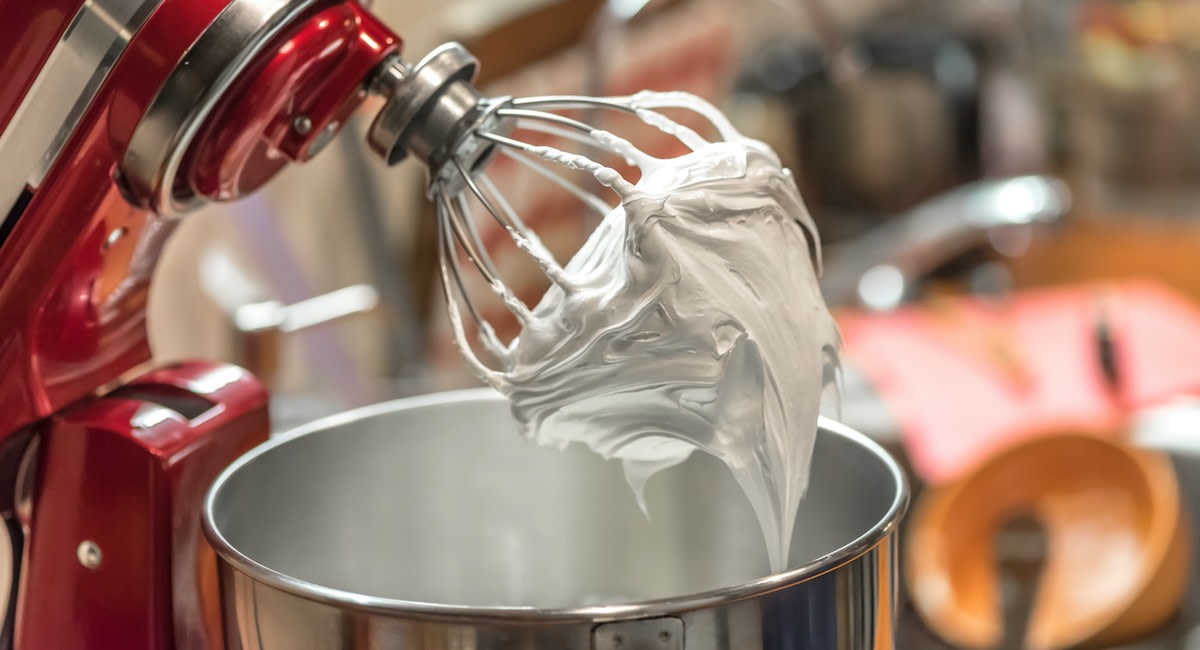Whipped cream is delicious, but it tends to become runny if you leave it out for too long. Once you know how to stabilize whipped cream, you’ll find so many uses for it: swooped over cupcakes, sandwiched into a layer cake, or served with a spread of summer berries and ice cream cake.
Learn From the Best
What Is Whipped Cream?
Whipped cream is a dairy-based topping used in a number of dessert dishes, from cobblers, shortcakes, and pies, to pavlovas, trifles, ice cream, and fresh fruit. Homemade whipped cream consists of heavy cream (or heavy whipping cream) combined with sweeteners and flavorings like powdered sugar, maple syrup, or vanilla extract and beaten until soft peaks form. You can do this by hand, using a whisk or an electric mixer, or in the bowl of a stand mixer fitted with the whisk attachment.
What Is the Purpose of Stabilizing Whipped Cream?
Stabilizing whipped cream allows for decorative stiff peaks and swoops that won’t collapse at room temperature—or in the heat of a summer get-together—or melt into deflated, runny cream overnight. Stabilizers enhance the shelf life and structure of a whipped cream topping, allowing for easy piping (and easy food coloring incorporation) without sacrificing flavor or a light, fluffy mouthfeel.
5 Ingredients to Stabilize Whipped Cream
There are a few methods for stabilizing regular whipped cream; which you choose is a matter of personal preference. Some methods will better suit certain desserts over others. Experiment and find which works best for you.
- 1. Cornstarch: Cooks commonly use cornstarch to thicken stews and sauces, but it works just as well in delicate, airy whipped cream. To offset the graininess of the cornstarch, dissolve it in a bit of cream first: Whisk together a tablespoon of cornstarch with powdered sugar, then whisk it into half a cup of the cream in a small saucepan over medium heat, just until warmed. Let cool. Beat the remaining cream as normal until soft peaks form, then drizzle in the cornstarch mixture until fully incorporated.
- 2. Cream of tartar: Cream of tartar works like cornstarch to strengthen the bonds between protein molecules, water, and air bubbles, without feeling grainy or imparting flavor. Use a quarter teaspoon of cream of tartar for every one cup of cream for a whipped cream frosting with a texture like buttercream.
- 3. Crème fraîche or cream cheese: For a stabilizer that enhances flavor as well as structure, look no further than crème fraîche, French cultured cream. The extra butterfat in crème fraîche helps trap air, and the tangy topnote adds balance to sweet dishes like cupcakes and layer cakes. Depending on how much you use, whipped cream stabilized with crème fraîche can take on the texture of a very light mousse.
- 4. Gelatin: Unflavored gelatin is the stabilizer of choice for many pastry cooks. Bloom the gelatin in cold water in a microwave-safe bowl, then microwave it a few seconds at a time until the gelatin becomes liquid; set aside. Stream the gelatin mixture into softly whipped cream. Finish beating the cream on medium speed until stiff peaks form.
- 5. Milk powder: Some stabilized whipped cream recipes call for the same powdered milk product found in instant pudding mix. Sift together with confectioner’s sugar and add to cold cream before whipping.
How to Store Stabilized Whipped Cream
Store stabilized whipped cream in an airtight container or a mixing bowl covered with plastic wrap in the refrigerator or freezer. Use within twenty hours for best results, or store for up to three days. If your whipped cream separates, simply whisk it back into shape.
Want to Learn More About Baking?
Become a better baker with the MasterClass Annual Membership. Gain access to exclusive video lessons taught by the world’s best, including Joanne Chang, Dominique Ansel, Gordon Ramsay, Chef Thomas Keller, Mashama Bailey, and more.
